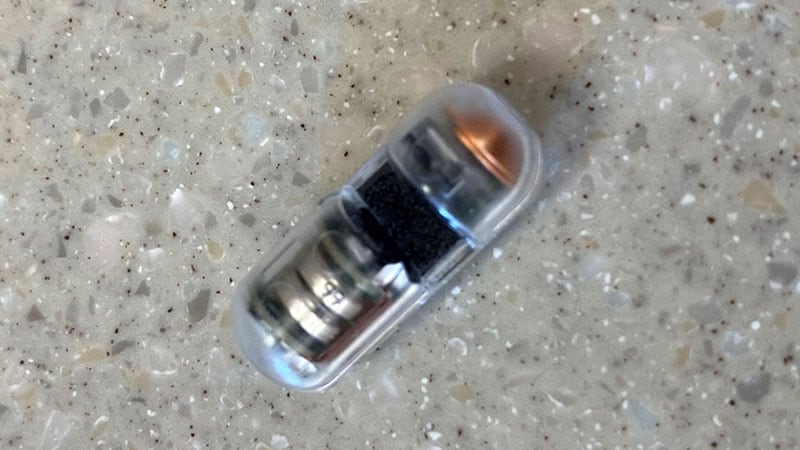Core Concepts
Real-time capsule detects UGIB efficiently.
Abstract
The content discusses the effectiveness of a real-time, blood-sensing capsule in diagnosing upper gastrointestinal bleeding (UGIB) before endoscopy. The study highlights the safety, accuracy, and rapid deployment of the PillSense system, emphasizing its potential to impact patient outcomes positively. The capsule's ability to aid in triage and clinical decision-making is underscored, complementing the role of esophagogastroduodenoscopy (EGD) in patient care. Optical sensing technology enables the capsule to differentiate blood in the gut accurately, with high sensitivity and specificity. The study's results demonstrate the PillSense system's value in improving workflow and optimizing patient care pathways.
Real-Time, Blood-Sensing Capsule Diagnoses UGIB in 7 Minutes
Stats
In under 7 minutes, the capsule correctly detected the presence of blood in 26 of 28 patients and its absence in 87 of 96 patients.
The capsule's positive and negative predictive values were 74.3% and 97.8%, respectively.
PillSense recording time was a mean of 6.71 minutes, the time from capsule ingestion to EGD was a mean of 55 minutes, and the time to capsule passage through the GI tract was 3.6 days.
Quotes
"The use of the PillSense system will positively impact patient outcomes by providing early diagnosis, triaging, and directing care for UGIB." - Karl Akiki, MD
Key Insights Distilled From
by Becky Mccall at www.medscape.com 10-16-2023
https://www.medscape.com/viewarticle/997407
Deeper Inquiries
How can the PillSense system be integrated into existing healthcare systems to maximize its benefits?
The PillSense system can be integrated into existing healthcare systems by establishing clear protocols and guidelines for its use. This would involve training healthcare personnel, including nonphysicians, on how to administer the capsule and interpret its results. Additionally, incorporating the PillSense system into emergency department workflows can help expedite the diagnosis and triage of patients with suspected upper gastrointestinal bleeding (UGIB). Collaborating with gastroenterologists and other specialists to develop standardized pathways for patient management based on PillSense results can further optimize its benefits. Integration with electronic health record systems can also streamline data collection and analysis, ensuring seamless communication between healthcare providers.
What potential challenges or limitations might arise in the widespread adoption of the PillSense system for UGIB diagnosis?
Despite its promising results, the widespread adoption of the PillSense system may face challenges such as cost barriers, reimbursement issues, and accessibility concerns. The initial investment in acquiring the PillSense technology and training healthcare staff could be a deterrent for some healthcare facilities. Reimbursement policies may need to be updated to cover the costs associated with using the PillSense system, especially in regions where healthcare funding is limited. Ensuring equitable access to the PillSense system in both urban and rural healthcare settings is crucial to prevent disparities in patient care. Regulatory hurdles and concerns about data privacy and security may also need to be addressed to facilitate the widespread adoption of this innovative diagnostic tool.
How might the development of similar innovative diagnostic tools revolutionize other areas of healthcare beyond gastroenterology?
The development of similar innovative diagnostic tools could revolutionize other areas of healthcare by enhancing early detection, improving patient outcomes, and optimizing resource utilization. For example, in cardiology, real-time blood-sensing capsules could help diagnose acute coronary syndromes or monitor cardiac biomarkers, leading to timely interventions and reduced morbidity and mortality. In oncology, advanced sensing technologies could enable the early detection of cancer biomarkers, facilitating personalized treatment strategies and improving survival rates. In infectious diseases, rapid diagnostic capsules could aid in the prompt identification of pathogens, guiding appropriate antimicrobial therapy and reducing the spread of infections. By leveraging cutting-edge diagnostic tools across various medical specialties, healthcare systems can achieve greater efficiency, accuracy, and patient-centered care.
0
More on Healthcare
